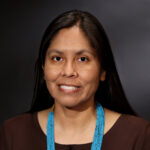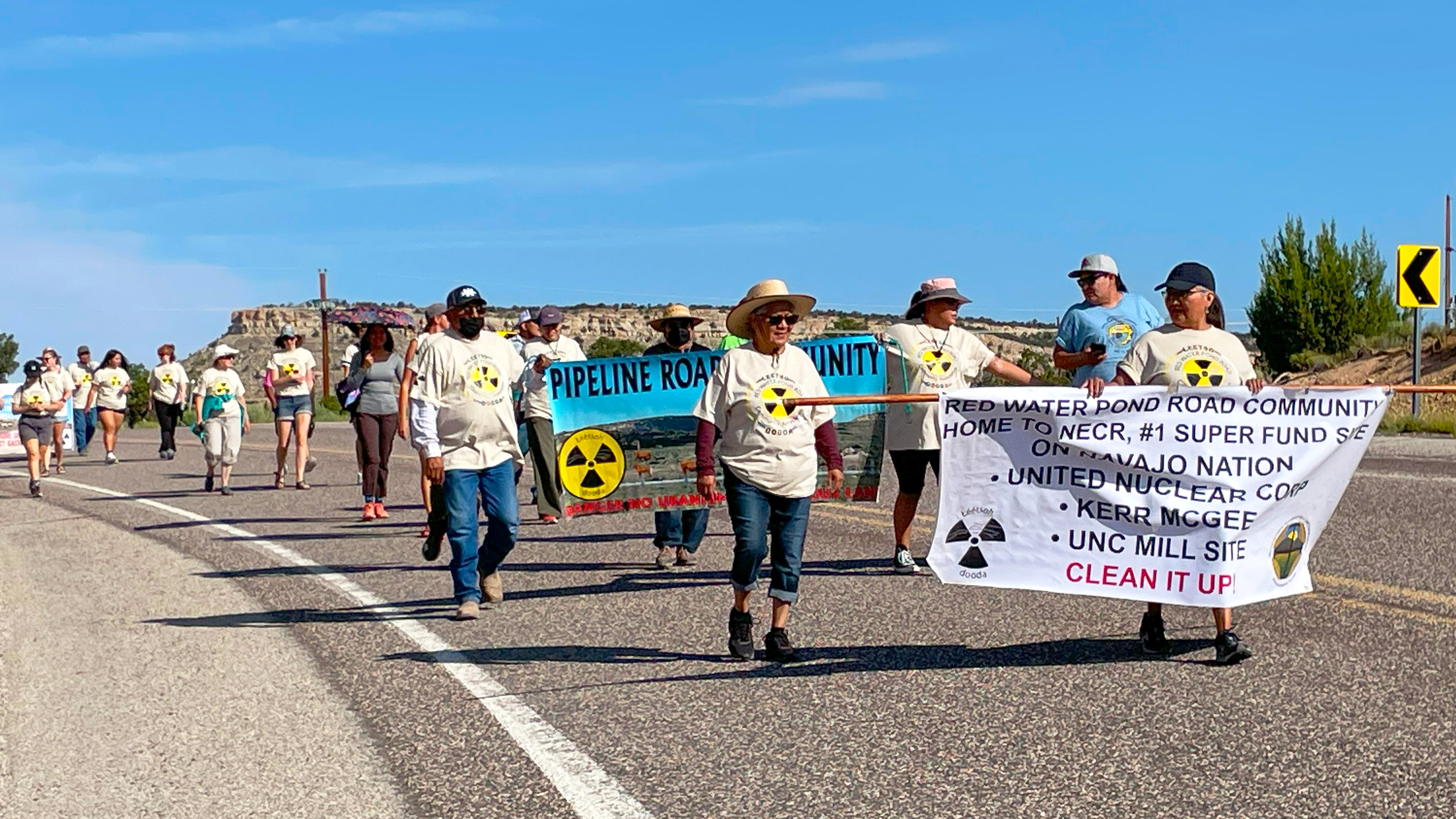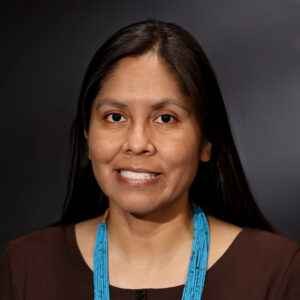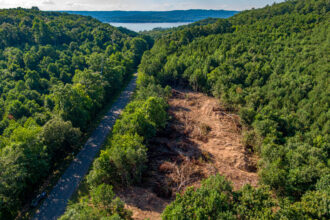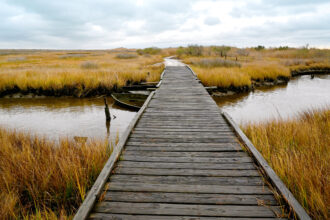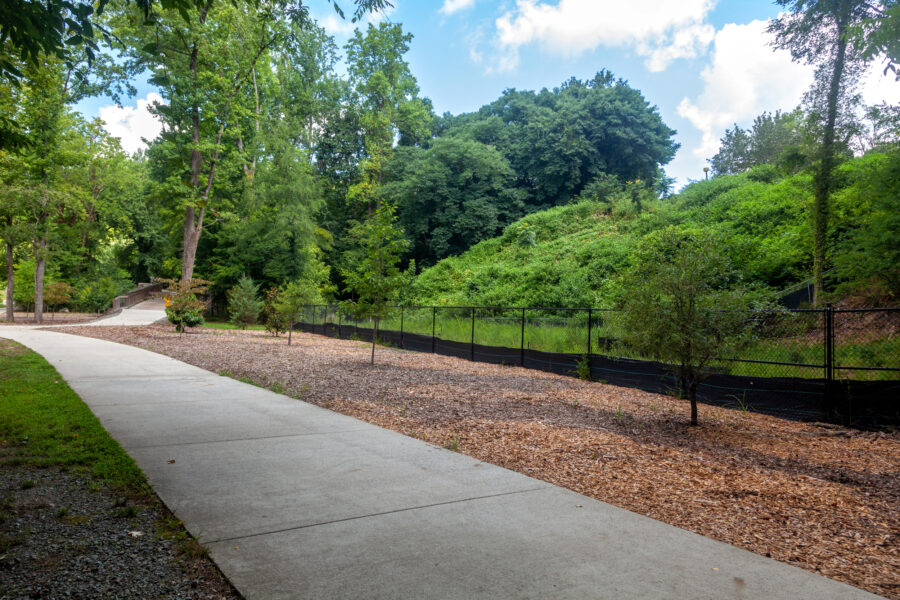RED WATER POND ROAD, New Mexico—As Tony Hood walked along New Mexico Highway 566 last Saturday, he thought about where he was 45 years earlier, when an earthen dam broke at the site of a uranium mill operated by the United Nuclear Corp., releasing 94 million gallons of radioactive water and 1,100 tons of uranium waste across portions of New Mexico, Arizona and the Navajo Nation.
Hood was working inside a nearby underground mine owned by the Kerr-McGee Corp. when the dam broke on July 16, 1979. He didn’t learn about the spill until after returning to the surface.
As he walked in this month’s event commemorating the spill, he pointed to the spot where the dam was located.
“I guess they observed there was some cracks in the earthen dam but they didn’t do nothing about it,” he said. “Finally, the dam collapsed, breached.”

The dam failure at the processing mill north of Church Rock, New Mexico, released radioactive liquid that eventually flowed into the Rio Puerco and through areas on the Navajo Nation, nearby Gallup, New Mexico, and, finally, Arizona. Now known as the Church Rock spill, the accident released the most radioactive material in U.S. history—more than the notorious partial meltdown at the Three Mile Island Nuclear Generating Station four months earlier—yet remains largely unknown to the American public.
The nonprofit Red Water Pond Road Community Association tries to remedy that lack of awareness by organizing the annual walk by the site of the spill, during which current and former area residents, supporters and advocates remember what happened that day. They also talk about the aftermath, including what federal and tribal agencies have done and need to do to clean up the communities affected by the accident.
Hood grew up in the Red Water Pond Road community in an area with a hodgepodge of tribal, private, state and federal land ownership that is surrounded by three uranium mining sites.
He worked with Kerr-McGee for 11 years, first as a draftsman after serving in the Army. He transferred to mining because wages were better, but he did not know the hazards of uranium exposure on human health.
“They really didn’t stress that much about safety,” he said. “They didn’t tell us it would affect your health later on. All they said was, ‘You have job security for 30 years. You can retire here.’”
Although Hood eventually moved closer to Church Rock, he still maintains a hogan on family land near Red Water Pond Road and some of his siblings still live there. Many families have seen relatives move away because of health issues. Others were told to relocate amid cleanup efforts by government agencies.
Mining ceased in the area after uranium prices fell in the 1980s and importing the mineral became more economical for companies. Hood worked at the Kerr-McGee mine until the company shut its operations there in the 1980s.
But the impacts of uranium mining and the Church Rock spill continue to plague former workers and residents of the area.


A report in May 2014 by the U.S. Government Accountability Office found that “Navajo people continue to live with the environmental and health effects from mining operations: more than 500 abandoned mines are located across the reservation, some close to homes and communities, and an unknown number of homes and drinking water sources contain radioactive elements.”
Educational materials distributed by the Red Water Pond Road Community Association mention some health studies that residents participated in. One is the Navajo Birth Cohort Study, which since 2010 has been looking at the relationship between uranium exposures, birth outcomes and child development on the Navajo Nation. Among the findings is that mothers were deficient in key nutrients for babies’ developing nervous systems. The association notes that a comprehensive study still needs to be done about the effects of uranium on Navajo health.
“We sacrificed our lives, our bodies to mine that ore,” Hood said.
The group carried banners as they walked south on the highway in McKinley County. They stopped for a photo outside fencing that surrounds part of the United Nuclear property, designated as a Superfund site by the U.S. Environmental Protection Agency in 1983.
The federal and Navajo Nation EPAs have been working together to oversee United Nuclear’s clean up of Northeast Church Rock Mine, near the processing area that supplied uranium to the mill.
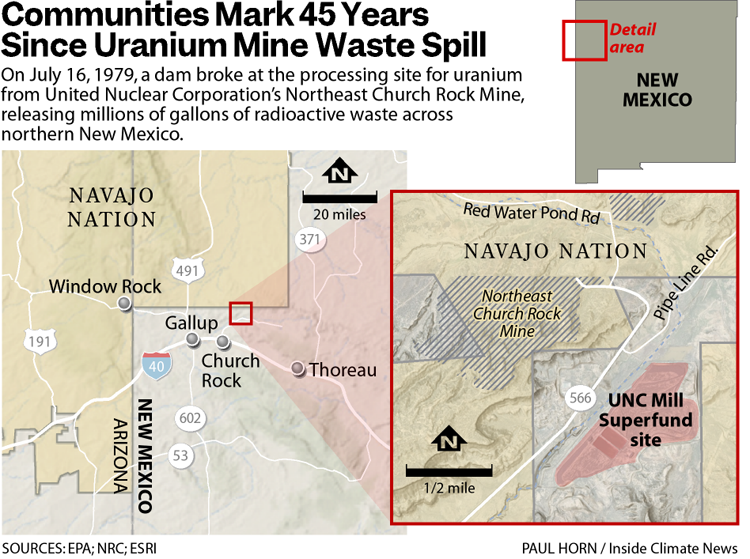
On the federal EPA’s Superfund website, the United Nuclear site is described as covering 125 acres and includes the former uranium ore processing mill and tailings disposal area.
The nearest home is 1.5 miles north of the site. Residents there and elsewhere in the area still use bottled water for drinking, cooking and bathing.
Back at the shade house, the structure the Red Water Pond Road Community Association uses for its gatherings and meetings, participants in the commemoration spoke about ongoing efforts to clean up uranium mining sites on Navajo land.
“A lot of this contamination that we have, that has been here for decades now, we would like to see it taken off the reservation and properly disposed of in long-term waste depositories,” said Stephen B. Etsitty, executive director of the Navajo Nation EPA.
Etsitty led the agency from 2003 to 2015 and was appointed again to that role last year by Navajo Nation President Buu Nygren.
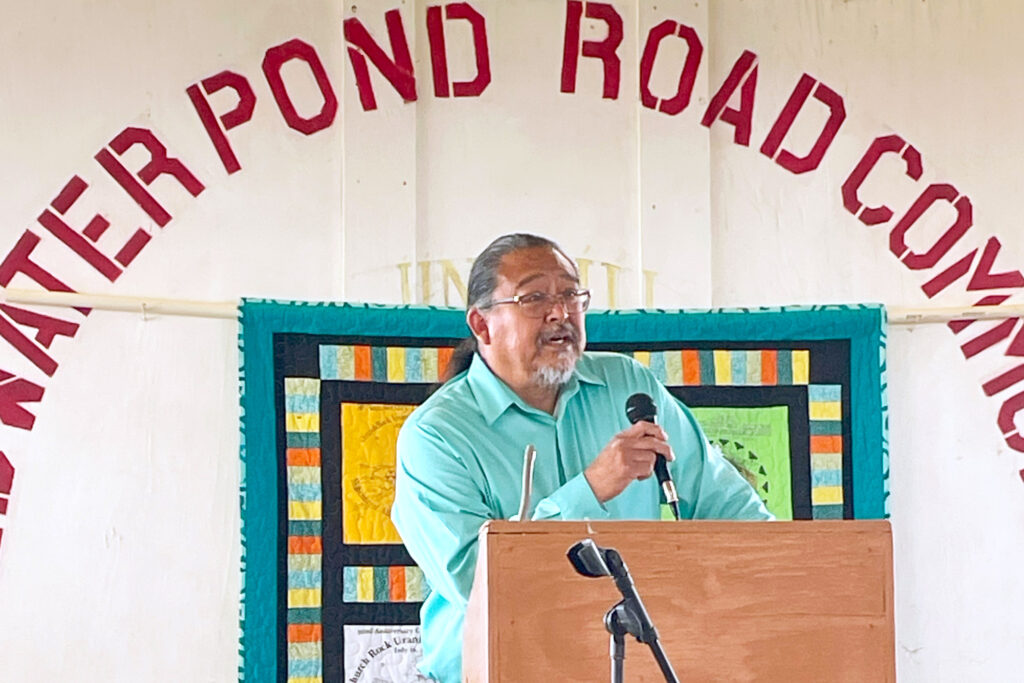
“The Navajo Nation remains steadfast in its efforts to address the long-term impacts of uranium contamination and to advocate for the health and safety of our people,” Nygren said in a statement read by a member of his staff. Nygren did not attend the event so he could participate in meetings in advance of the tribal council’s summer session.
Curtis Yanito, a delegate on the Navajo Nation Council, represents the chapters of Aneth, Mexican Water, Red Mesa, Teec Nos Pos and Tólikan—communities in Arizona and Utah that he said also want to see appropriate cleanup of old uranium mines.
Yanito, who is serving on the tribal council for the first time, said the stories he hears from community members help him advocate for them with federal agencies, and he wants to learn more about the ongoing issues that the Church Rock spill and uranium mining pose to the Navajo people.
“I’m here for you guys. I want a lot of input. Educate me,” Yanito said.
About This Story
Perhaps you noticed: This story, like all the news we publish, is free to read. That’s because Inside Climate News is a 501c3 nonprofit organization. We do not charge a subscription fee, lock our news behind a paywall, or clutter our website with ads. We make our news on climate and the environment freely available to you and anyone who wants it.
That’s not all. We also share our news for free with scores of other media organizations around the country. Many of them can’t afford to do environmental journalism of their own. We’ve built bureaus from coast to coast to report local stories, collaborate with local newsrooms and co-publish articles so that this vital work is shared as widely as possible.
Two of us launched ICN in 2007. Six years later we earned a Pulitzer Prize for National Reporting, and now we run the oldest and largest dedicated climate newsroom in the nation. We tell the story in all its complexity. We hold polluters accountable. We expose environmental injustice. We debunk misinformation. We scrutinize solutions and inspire action.
Donations from readers like you fund every aspect of what we do. If you don’t already, will you support our ongoing work, our reporting on the biggest crisis facing our planet, and help us reach even more readers in more places?
Please take a moment to make a tax-deductible donation. Every one of them makes a difference.
Thank you,
